Jill drove me to Logan airport and I flew to Mendoza on an overnight flight through São Paulo. As we left Boston, a rising full moon illuminated Cape Cod Bay. We flew by Martha’s Vineyard with the lights of Nantucket sparkling across Nantucket Sound. Really pretty. I had a nice meal, sipped some Argentinian Malbec, slept for 6 hours, and woke to sunrise as we approached São Paulo. I connected to another Latam flight and landed in Mendoza, Argentina mid day.
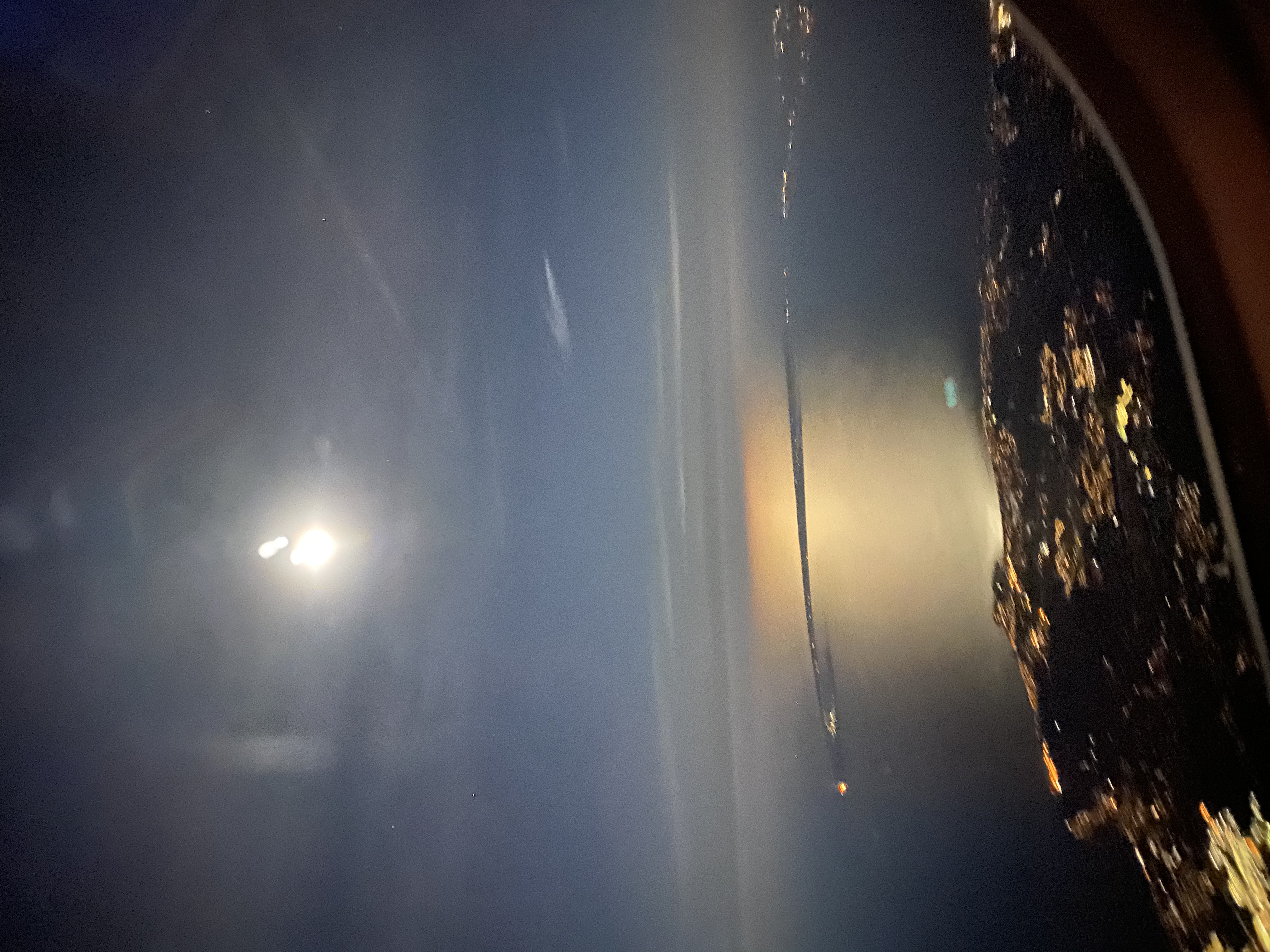
Moonrise over Cape Cod 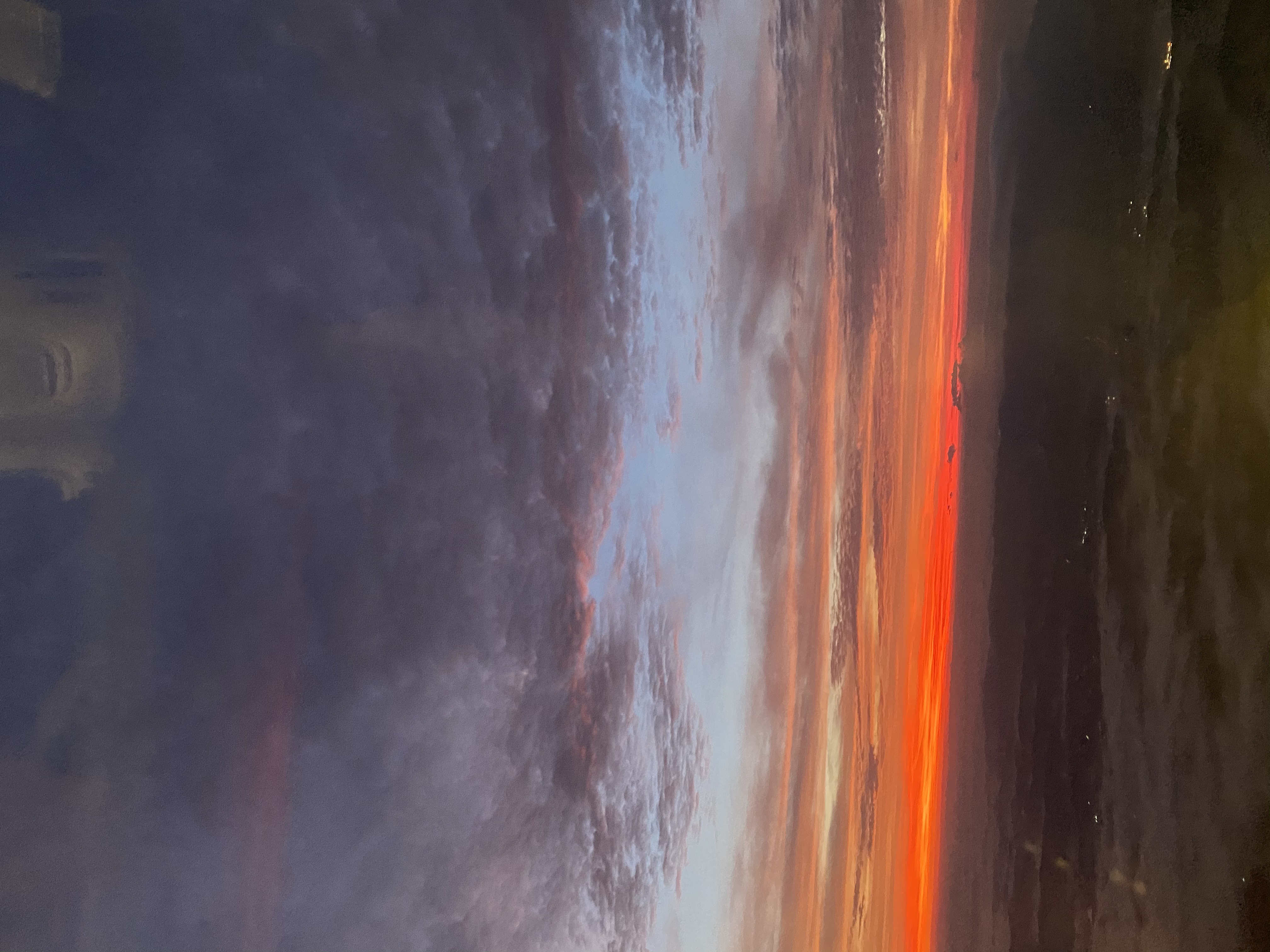
Sunrise over São Paulo 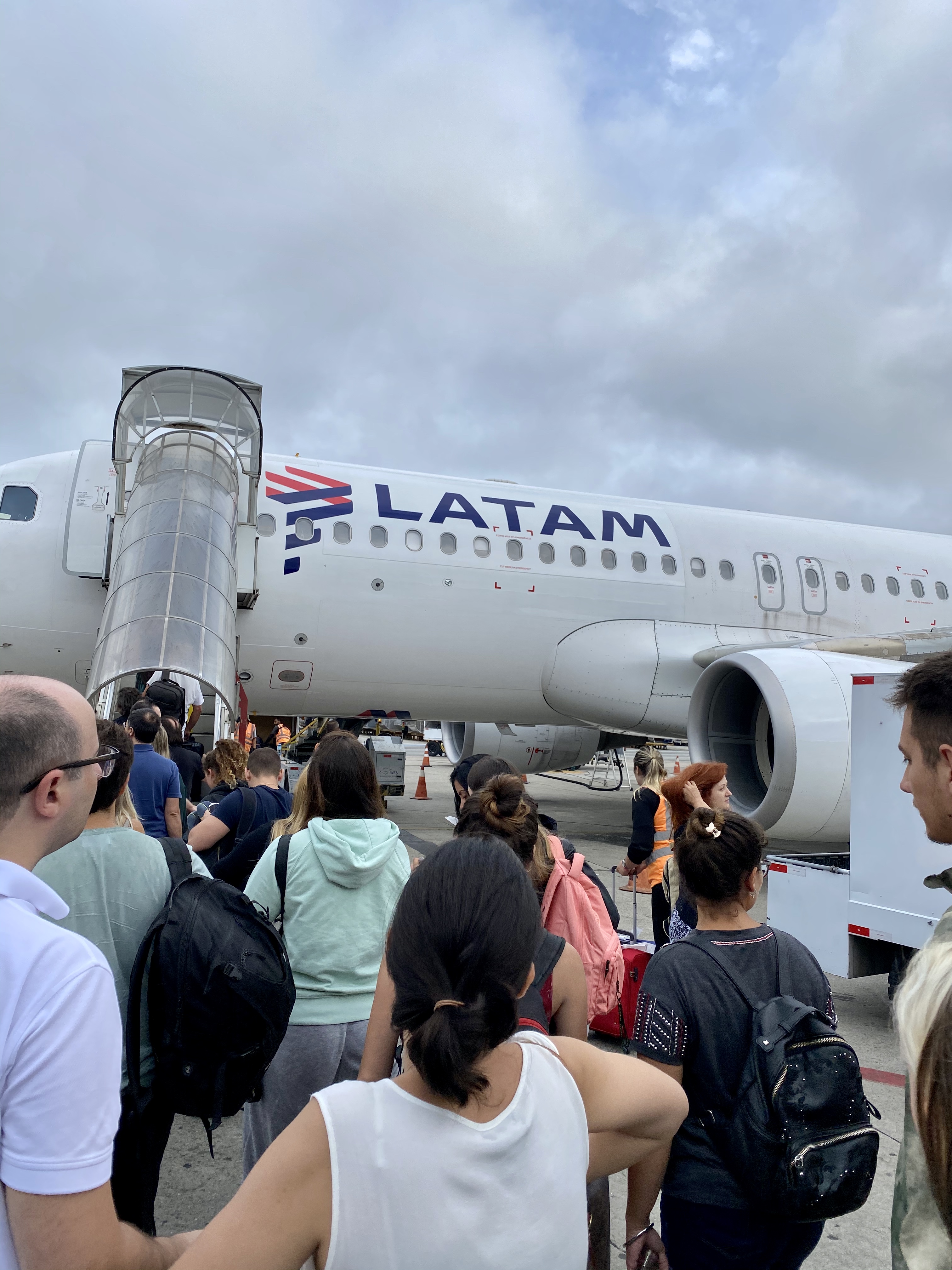
Connecting to Mendoza
I have flown frequently over the past four decades, first in the expedition travel business and then as a management consultant. International air travel still has romance and magic; at least it does for me.
Some words on Mendoza
Mendoza is wonderful: warm and relaxed, with leafy streets lined with outdoor cafes. It is in the foothills of the Andes, surrounded by desert. The greenery and agriculture are due to artful channeling of the water that runs down from the mountains. The center of Argentina’s wine industry, Mendoza produces virtually all of the country’s great Malbecs. It is also known for its amazing steak. Lots of people come here to visit the wineries, go river rafting and hiking, and explore the countryside. Everyone heading to Aconcagua passes through here.
I am staying at the Park Hyatt, which I had heard lots of good things about from other climbers. It is built around a wonderful historic building right in the middle of everything. A bit worn around the edges if you look closely, (like a lot of Mendoza), but a neat vibe and thoroughly great place to hang out.
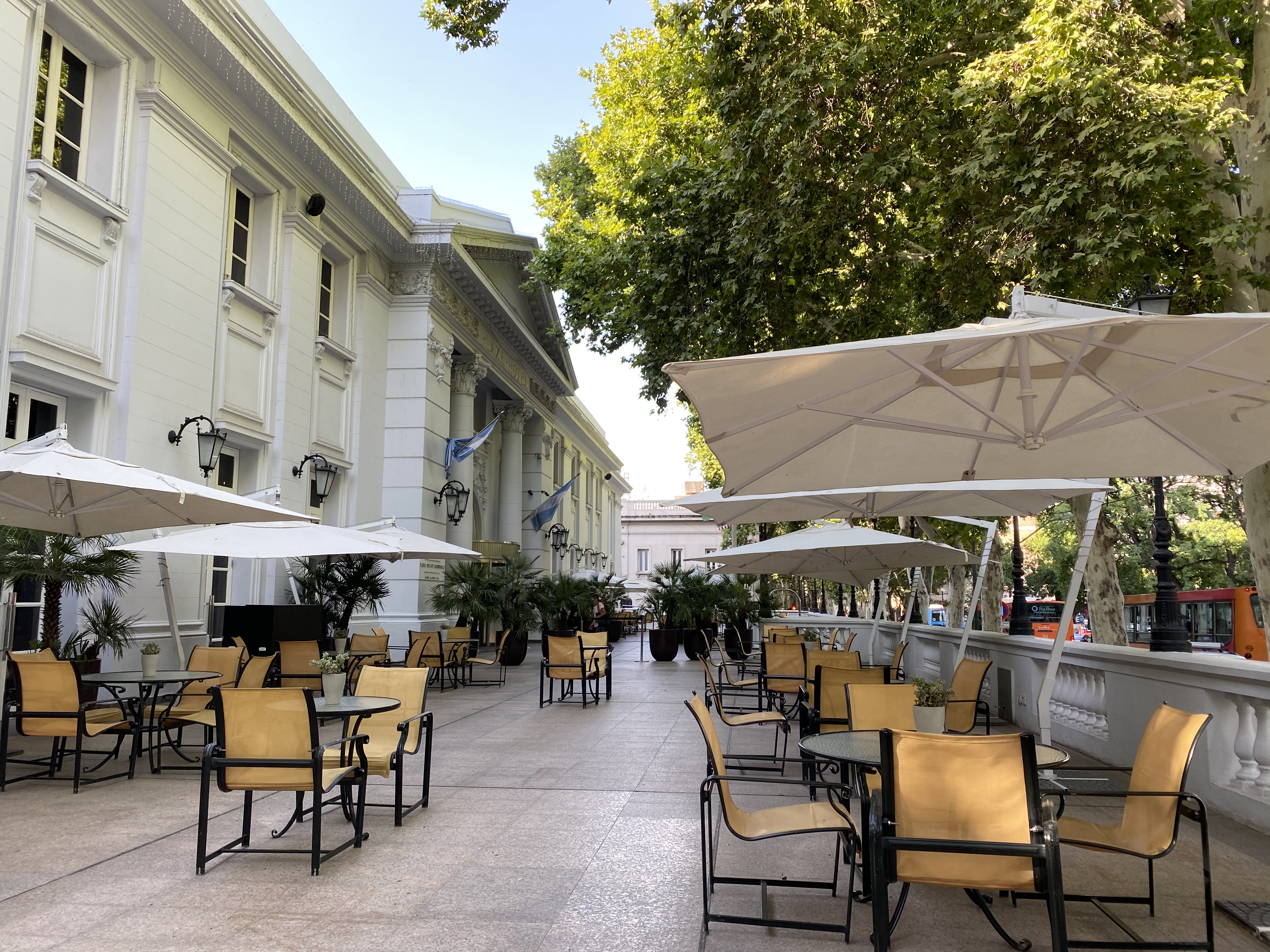
Base camp in Mendoza: The Park Hyatt 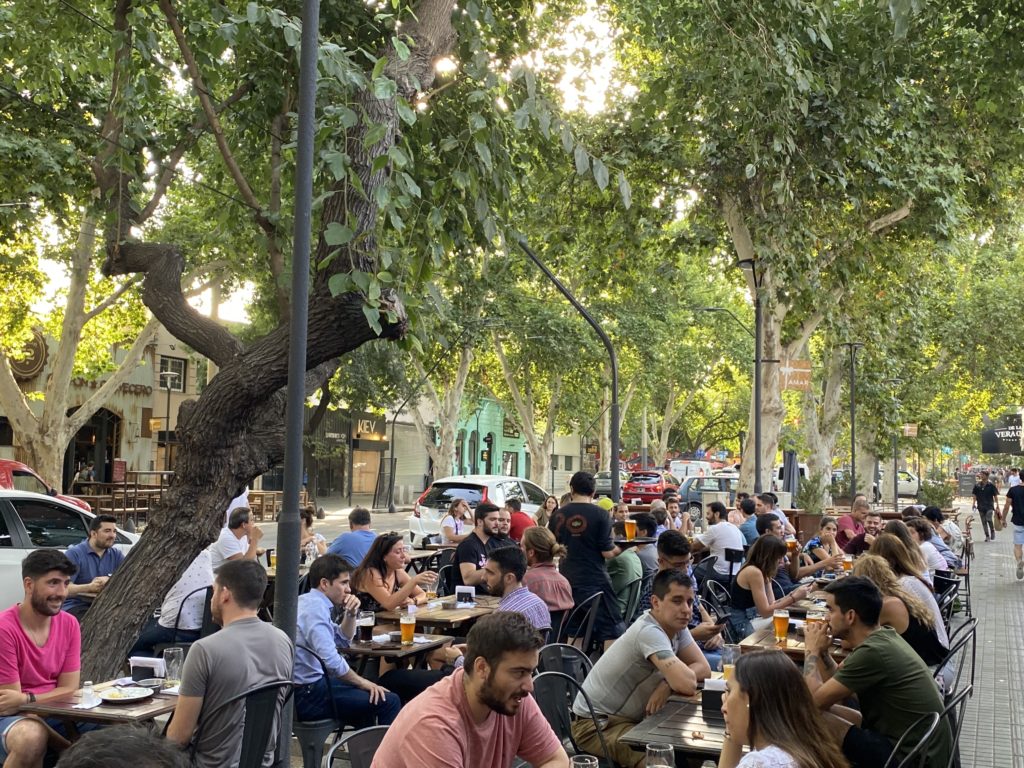
Tree-lined streets
I am spending two days here: getting climbing permits, going through gear, meeting up with the group I will be climbing with, and enjoying the town. We leave Sunday morning for the mountains.
Some words on Aconcagua
Aconcagua, at 22,837 feet, is the highest mountain in North and South America. It lies close to the border with Chile, and attracts lots of climbers due to its height, prominence, and the fact that the so-called “Normal Route” does not require technical climbing skills. The main challenges on the Normal Route are altitude and weather. Aconcagua is very high, and the mountain can be extremely windy and cold. I will be attempting something other than the Normal Route, which will involve some additional challenges.
The route I hope to climb is called the Polish Glacier Direct. In addition to a technically challenging summit day, (more on this in a minute), a neat thing is that I will be circumnavigating the mountain. After spending one night near the trailhead in place called Penitentes, I will hit the trail in Punta de Vacas and trek three days up the Vacas and Relincho Valleys to base camp on the east side of the mountain. From there I will spend roughly 10 days moving up the mountain to progressively higher camps, climb to the summit (hopefully), descend to a different base camp on the west side of the mountain, and then trek down the Horcones Valley to Puenta del Inca. The attached photo from Google Earth gives you an idea – I will be traveling in a counterclockwise arc around the mountain.
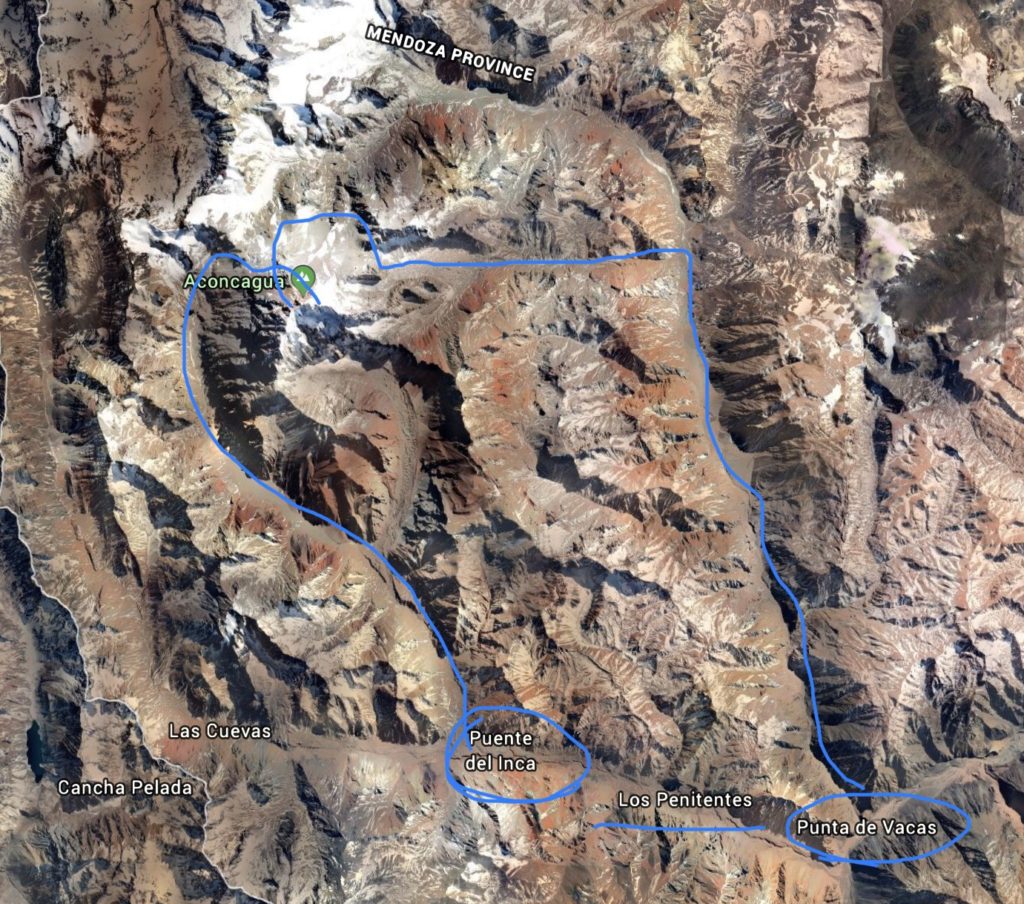
For those of you who like specifics, here is more detail on how I am approaching the mountain and the choices I will face on summit day. (If this is more detail than you can stomach, feel free to skip to the next section!)
I am joining a guided group of six other climbers who are planning on doing the counter-clockwise circumnavigation while skipping the Polish Glacier on summit day. Instead, they will meet up with the Normal Route at high camp and summit from there. This is called the “False Polish” route and is by far the most common way people who climb Aconcagua from the east side do so. My plan, if the route conditions allow, is to split off from the group at high camp and climb the actual Polish Glacier. This is far more technical than the False Polish/Normal Route, and involves a long day of steep snow and ice climbing at 20,000-23,000 feet. I have arranged for a private guide to come along on the trip so he can climb with me on this day.
The photo below from Google Earth tries to show what I am talking about. It is effectively a “zoom-in” on the upper left corner of the previous photo. I will go to high camp with the group, then – if conditions permit – traverse across to the base of the Polish Glacier, climb it to the summit, and descend the Normal Route back to high camp. (Red line up, blue line down. ) Another mini circumnavigation of the mountain. The first half of the red line is a pretty flat traverse, then I will make a right turn and the real climbing will begin. If the route isn’t in good enough shape to allow this, my summit day will be on the Normal Route, (blue line up and down), along with the rest of the group. Make sense?
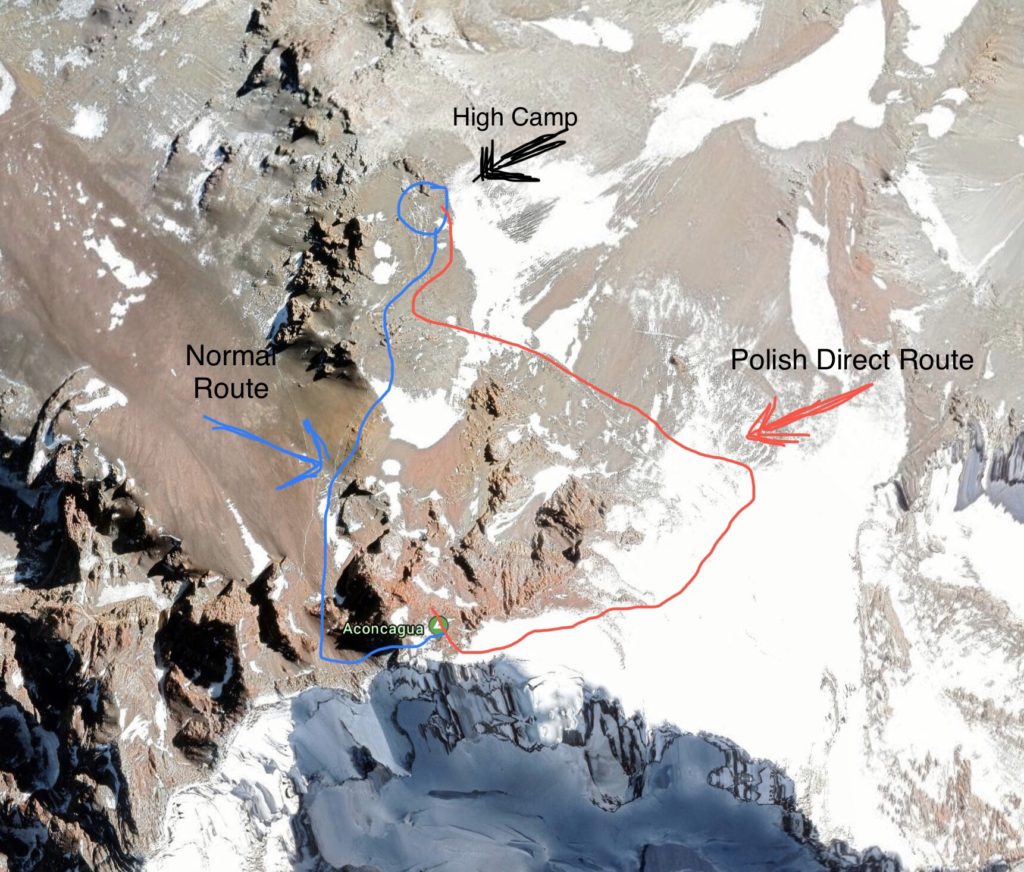
In the past, climbing a bending route up the left side of the Polish Glacier was a popular way for people with moderate technical skills to ascend the mountain. Unfortunately, climate change has caused the glacier to melt and receive less snowfall, making it icier and more exposed to icefall risk. This caused people to start choosing a more direct line to the summit up climber’s right side of the glacier; the so- called Polish Direct Route. While steeper, it has less icefall risk. However, the same climate change forces are making this route problematic as well, which is why few people attempt it these days. Conditions vary year to year. Sometimes it is pretty straightforward, and sometimes it isn’t. I am hoping this is one of the straightforward years.
Here is a stock photo showing the Polish Glacier Direct Route. This is what I hope to be climbing to the summit in roughly two weeks time. If this is one of the non-straightforward years, I’ll summit on the Normal Route instead. This will still be challenging and wildly rewarding, but my fingers are crossed for acceptable route conditions on the Polish Direct.🤞🤞
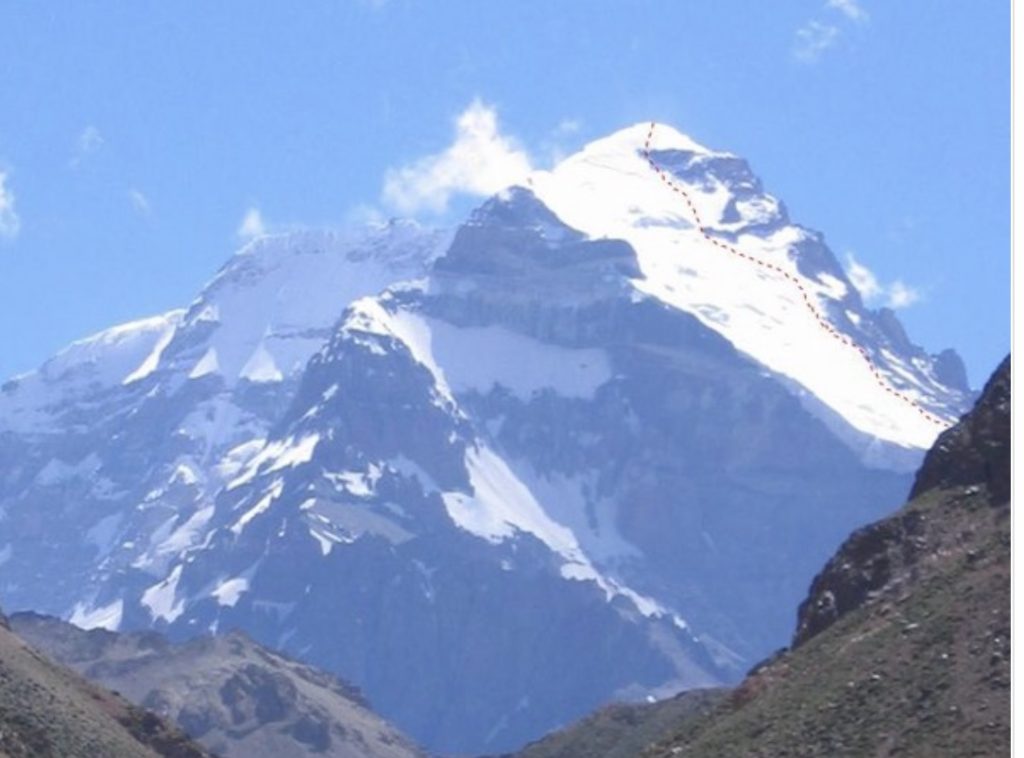
Off to Penitentes tomorrow. I will probably post next from base camp, (internet access permitting).
Early days in the gap year, but loving every minute of it so far.
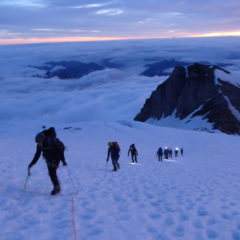
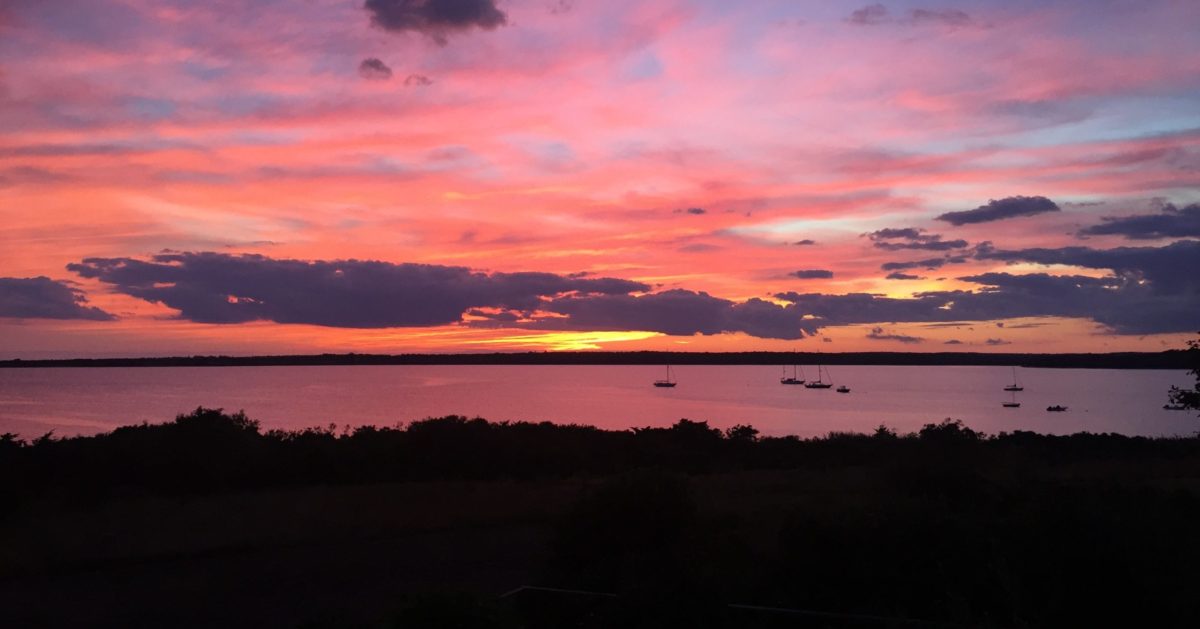
Go Tom Go! Best of luck and stay safe!
Thanks Karen. 2020 is the year for more sailing with you guys!
Holy s–t Cousin! Looks amazing. Thanks for your reflections on climate change. I witnessed climate impact too on Mont Blanc’s glaciers this past summer–though I was looking up at them, not ascending them! I’m getting a vicarious thrill through your blog. Keep it coming!
Thanks Amanda, and keep up the good fight on climate change
Goosebumps reading this. This is just way too cool! Safe and fun journey onwards French! 💥 💥 💥
Thanks Kataisto!
Great photos and narrative cousin! I hope the glacier is formed up perfectly for summit day!
Thanks Alex. Following in your footsteps. You were the trail blazer. 🙏
Love your description of Mendoza— so perfectly sums it up. Glad to hear that the Park Hyatt lives up to its reputation, too. And I’m in awe of your gap year plans. Can’t wait to read more.
Thanks Nancy. Let’s do some sailing together this year!
Hey Tom, Mendoza is one of our favorite cities, but the road under Aconcagua on the way to Santiago is as close as I hope to ever come to your route! What a great start to your gap year.
Thanks Cecil. Love picturing you and Nancy here.
Love your detailed description. Hoping the weather gods are with you and you will be able to climb the Polish direct route. Sounds exhilarating and intimidating!!
Thanks Ellen. Looking forward to our group dinner next month.
WOW! Incredible! Thanks for all the explanation – you made everything very clear! Maybe blogging will be an ongoing part of your retirement Tom! Good luck and I can’t wait to read your next post!
Thanks Sarah, and thanks also for holding down the DLCT fort.
Mt. Man Tom!
It gives me huge thrill to remember that your adventure-lust started off riding bikes with DownHill Spokers.
Another DHS success story☄️👍.
Keep breathing the thin air and know you are mountaineering for all of us!
Thanks Scott. I have fond memories of that bike trip from NYC to Quebec back in 1982. Also sleeping on your couch in New York after the trip, and thanks to you getting an introduction to Sonja Lindblad, which led to me spending three cherished years working for Lindblad Expeditions.
All the best, and Keep On Spokin’!
Question…..
What was my good fortune in ’82 to have chosen you as a leader for Quebec tour?
How did we 1st meet-up?
How we first connected is a great question that is lost in the mists of time. Somehow I learned of a bike tour operator looking for a trip leader 🚴♂️⛺️ Very grateful that you took my call.
Yikes!
Love all the detail. Nice diagrams! Photos with sub-titles!
All makes sense except when “normal” route looks more direct than the “direct” route, but you stay on the lines either way my friend!
Love that you are paying attention with your usual laser focus. The traditional Polish Glacier Route high camp is right at the base of the glacier , so the “direct route” typically really is direct. As described , I am most likely going to traverse over to the glacier from the group’s high camp on the Normal Route, thus the long arc.
There is actually a scenario in which my guide and I decide to leave the larger group a day earlier and establish our own high camp in the traditional spot at the base of the glacier, but that involves a bunch of complicated logistics that I though better not to go into.
In all cases, I will make sure to stay on the lines! 🙂 Thanks for following along.
Tom:
Mac and I had a great look at Aconcagua during our heli-skiing adventures in Chile in 2018…I envy your trip and wish you well, as ever. Also hoping that “The Polish Direct Route” is not the genesis of a questionable ethnic joke…
-ghc-
Thanks GHC. Hold down the fort in Division 2!